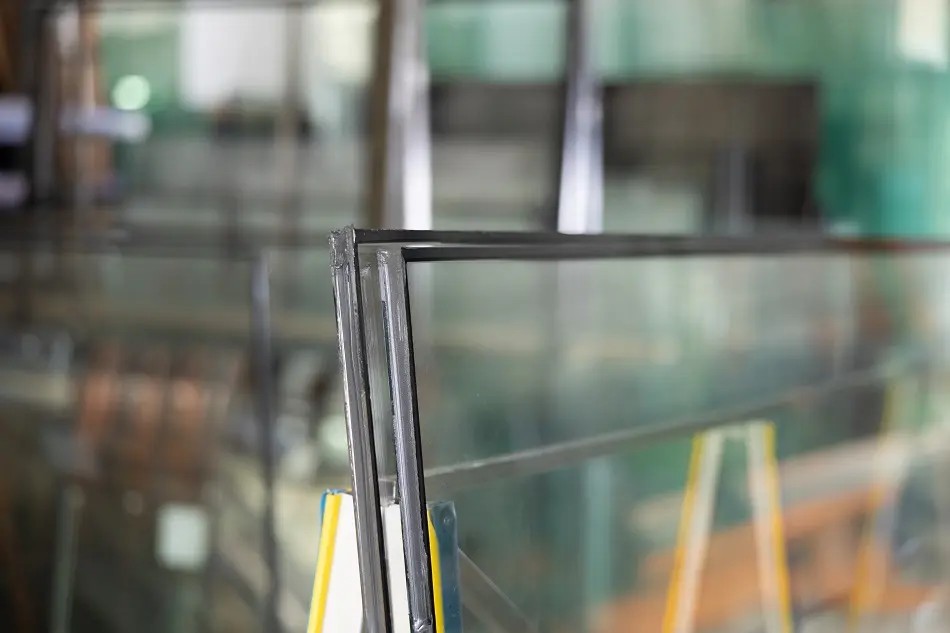Choosing the right type of glass can make all the difference in a building’s performance and safety. Insulated glass and laminated glass are two popular options, each offering unique benefits tailored to specific needs. While they may seem similar at first glance, their construction and applications set them apart.
Insulated glass focuses on energy efficiency and temperature control, making it a favorite for modern windows. Laminated glass, on the other hand, prioritizes safety and soundproofing, often used in areas requiring added protection. Understanding these differences helps homeowners and professionals select the ideal solution for their projects.
What Is Insulated Glass? Composition and Features
Insulated glass, also known as double glazing, consists of two or more glass panes separated by a spacer and sealed to form a single unit. The space between the panes is filled with air or an inert gas like argon to enhance thermal performance. A desiccant within the spacer absorbs moisture, preventing fogging.
It provides energy efficiency by reducing heat transfer, making it effective for temperature control in buildings. Low-emissivity (Low-E) coatings can be added to further boost insulation by reflecting heat while allowing light to pass through. This glass is commonly used in modern windows to minimize energy costs and improve indoor comfort.
Insulated glass reduces noise transmission but is more focused on thermal efficiency than soundproofing. It’s a preferred option for residential and commercial constructions where energy conservation is a priority. In debates like “ Insulated Glass vs Laminated Glass,” its standout feature is superior thermal insulation rather than safety or security.
Exploring the Structure of Laminated Glass
Laminated glass consists of two or more layers of glass bonded together by an interlayer, typically made of polyvinyl butyral (PVB) or ethylene vinyl acetate (EVA). The interlayer enhances the glass’s durability and keeps it intact upon impact, reducing the risk of injury from shattered pieces. High-pressure and heat processes ensure a strong bond between the glass layers and the interlayer.
The interlayer in laminated glass provides excellent soundproofing by dampening vibrations caused by sound waves. It also adds UV protection by blocking up to 99{6a6fe4f9e62af254cdf209a5c208a81255515808729dfd9e3b687acf58a358d4} of harmful rays, making it suitable for applications where sunlight exposure is significant. While its thickness and composition can vary based on specific needs, the structure remains effective for improving safety and acoustic performance.
In scenarios where enhanced safety is essential, such as storefronts, schools, and hurricane-prone areas, laminated glass is often preferred over insulated glass. Additional benefits include resistance to forced entry, making it ideal for security-focused installations.
Thermal Efficiency: How Insulated Glass Performs
Insulated glass delivers exceptional thermal efficiency by minimizing heat transfer between interior and exterior spaces. It achieves this through its multi-pane construction, where two or more glass layers are separated by a spacer and sealed, creating an insulating barrier. The spacer gap is filled with air or inert gases like argon or krypton, which reduce heat conductivity, enhancing thermal performance.
Low-emissivity (Low-E) coatings further improve the insulation of insulated glass. These coatings reflect infrared heat back into the building during winter and keep excessive heat out during summer, maintaining indoor temperature consistency. While allowing natural light to enter, this feature supports energy conservation and reduces reliance on artificial heating and cooling systems.
The use of insulated glass in windows and doors can result in significant energy savings. Studies indicate that it lowers energy consumption for heating and cooling by up to 30{6a6fe4f9e62af254cdf209a5c208a81255515808729dfd9e3b687acf58a358d4}, making it an ideal choice for sustainable building designs. In the discussion of Insulated Glass vs. Laminated Glass, its primary advantage lies in superior thermal efficiency over other attributes like soundproofing or impact resistance.
Safety and Soundproofing: Laminated Glass Advantages
Laminated glass delivers significant safety benefits through its strong interlayer, typically made of PVB or EVA. This interlayer prevents the glass from shattering into sharp fragments upon impact, making it safer for environments like schools, offices, and storefronts. Even under heavy stress, the glass remains intact, reducing injury risks and enhancing protection against forced entry. For more info please visit Apex Tempered Glass
Laminated glass also excels in soundproofing by mitigating sound vibrations. Its interlayer dampens noise transmission, making it a preferred choice for urban projects or commercial spaces requiring lower noise levels, such as recording studios or conference rooms. Compared to insulated glass, laminated glass provides superior acoustic dampening due to its specialized design.
Safety and soundproofing combine to make laminated glass the go-to option for storm-prone regions, as it resists breakage from wind pressure and flying debris. Additionally, this glass type complies with stringent building codes in areas requiring impact-resistant materials, offering unmatched security without compromising visibility.
Choosing the Right Glass for Residential Projects
Selecting between insulated and laminated glass for residential projects relies on factors such as energy efficiency, noise reduction, and safety requirements. Each glass type satisfies specific needs, making it suitable for certain applications.
Energy Efficiency
Insulated glass provides excellent thermal performance by reducing heat transfer. Its multi-pane structure with air or inert gas filling creates an effective barrier, lowering heating and cooling costs by up to 30{6a6fe4f9e62af254cdf209a5c208a81255515808729dfd9e3b687acf58a358d4}. For homeowners prioritizing energy conservation, insulated glass proves highly efficient when used in windows, patio doors, or skylights. Adding Low-E coatings enhances insulation without sacrificing natural light.
Noise Reduction
Laminated glass is ideal for soundproofing in urban environments or homes near busy streets. Its interlayer dampens vibrations, significantly reducing external noise. Residential projects requiring quieter indoor spaces, such as bedrooms or home offices, benefit from laminated glass over insulated glass.
Safety and Security
Laminated glass offers superior safety features due to its durability and impact resistance. Its interlayer prevents shattering, keeping the glass intact upon impact. Laminated glass outperforms insulated glass in regions prone to hurricanes or areas needing heightened security, such as ground-floor windows or sliding doors.
Climate Considerations
In colder climates, insulated glass supports warmth retention by minimizing heat loss. In contrast, laminated glass resists damage from extreme weather conditions, such as high winds or flying debris, making it suitable for storm-prone regions. Recognizing the local environmental demands helps in deciding between insulated glass and laminated glass.
Style and Aesthetic Appeal
Insulated glass accommodates sleek, modern designs with large, energy-efficient windows, blending functionality with aesthetics. Laminated glass, with its UV-blocking properties, prevents furniture and flooring discoloration while maintaining a clean, polished look. Homeowners may choose based on preferred design elements and practical benefits.
Using either insulated or laminated glass depends on functionality and project-specific requirements, whether it’s energy savings or enhanced protection.
Applications in Commercial and Industrial Settings
Understanding the distinct benefits of insulated and laminated glass allows professionals to make strategic decisions tailored to their project requirements. Insulated glass is a go-to choice for energy-efficient solutions in office buildings and modern commercial spaces, where thermal performance is a priority. Laminated glass, with its safety and soundproofing capabilities, is ideal for high-traffic areas, storefronts, and facilities requiring enhanced security.
Both glass types offer unique advantages that cater to specific needs, whether it’s conserving energy or ensuring safety. By evaluating factors like climate, functionality, and design, architects and builders can select the most suitable option to achieve long-term performance and aesthetic goals.


